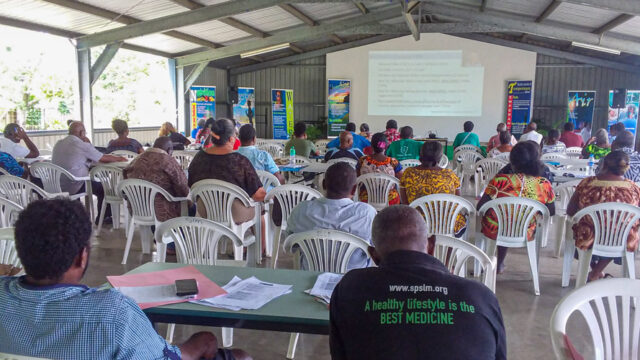T is for temperance—the balance in life

It was a scene of heartrending pain and despondency—children crying as the domestic upheaval they were enduring threatened their comfort zone and emotional security; a frustrated mother, obviously emotional and angry. “This is the last straw!” the mother said to herself. “We can’t take it anymore!” Joe, the alcoholic father and husband, had lost yet another job.
A pleasant, soft-spoken man, Joe generally was a kind father and considerate husband—except when under the influence of alcohol. His addiction to alcohol also cost him one job after another.
Joe smoked cigarettes as well. Not even the diagnosis of cancer of the larynx motivated him to stop smoking for more than a few months. Life-threatening diagnoses such as heart attack and cancer often lead to only short-term lifestyle changes. Something more is needed to effect meaningful and long-term changes in our established behavior.
Joe’s difficulties as a result of his love affair with alcohol affected many others, especially those in his family. Two of his four children also became alcoholics.
The Meaning of “Temperance”
Webster’s Dictionary defines “temperance” as “moderation in action, thought, or feeling, or moderation or abstinence from intoxicating drink.” Is this comprehensive enough? To achieve true balance in life we need to address all aspects of living. A definition that may move us closer to this wholeness in our living is: “True temperance teaches us to dispense entirely with everything hurtful and to use judiciously that which is healthful.”1
What makes matters more complex is that tobacco and alcohol are legal and freely available with very few restrictions. As a result, they’ve become entwined in cultures and societies worldwide despite the fact that they are the leading and third-leading causes, respectively, of preventable death!
Alcohol Consumption and Global Health
According to the World Health Organization (WHO):2
- Approximately 2.5 million people die from alcohol-related causes each year.
- Fifty-five percent of adults have consumed it.Four percent of all deaths are related to alcohol through injuries, cancer, cardiovascular diseases, and liver cirrhosis.
- Globally, 6.2 percent of male deaths are related to alcohol, and 1.1 percent of female deaths.
“Alcohol is a risk factor for a wide range of health conditions and social problems . . . accounting for approximately 4 percent of deaths worldwide and 4.6 percent of the global burden of disease, placing it alongside tobacco as one of the leading preventable causes of death and disability.”3
Alcohol and Cancer
In the European Union (EU), cancer is the second most common cause of death, with 2.5 million cancer deaths per year. It’s estimated that 10 percent of cancers in men and 3 percent of cancers in women can be attributed directly to alcohol use.
Robust evidence links alcohol as a cause of breast cancer in women and colon cancer in both men and women.4 Many scientific reports indicate that there is no safe limit/dose of alcohol that can be recommended to avoid its carcinogenic effect. This raises serious doubts about any recommendation that alcohol be used for health benefits, even cardiac.
Alcohol and Society
Alcohol use is also associated (often causally) with accidents of all kinds, such as road fatalities, as well as domestic violence, murder, rape, and other criminal activities.
Killer Tobacco
There is another lethal and freely available poison that is marketed in various forms—tobacco. It’s smoked, chewed, inhaled, and passed through water; all forms, however, are harmful and place the user at significant risk of disease and even death.
- Tobacco kills nearly 6 million people each year.
- Nearly 80 percent of the world’s 1 billion smokers live in low- and middle-income countries.
- Consumption of tobacco products is increasing globally.
- Approximately 1 person dies every 6 seconds as a result of tobacco-related causes.
- Up to half of current users will eventually die of a tobacco-related disease.
Tobacco is one of the most significant public health threats the world has ever faced, killing not only the user but often negatively impacting the health of, or even killing, those who are exposed to secondhand tobacco smoke.
There is no safe level of exposure to secondhand smoke. It’s a proven cause of cardiovascular and respiratory disease in adults, including lung cancer and coronary heart disease. SHS also is associated with Sudden Infant Death Syndrome (SIDS) and causes low birth weight in pregnant women. Children exposed to SHS have an increased incidence of upper- and lower-respiratory infections.
True Balance in Living
Scientific evidence and public health statistics show both alcohol and tobacco to be leading killers in the world today, so remember Paul’s counsel in Scripture: “Whether you eat or drink or whatever you do, do it all for the glory of God” (1 Cor. 10:31). Paul fortunately adds the secret of power and success: “I can do everything through him who gives me strength” (Phil. 4:13).
Help is never far away. Our gracious heavenly Father stands ready to guide our choices, ensuring a sustained and successful true balance in life. This calls for celebration!
_____________________
Read more in our CELEBRATIONS series:
- Choices: https://www.adventistworld.org/lets-celebrate-choices/
- Exercise: https://www.adventistworld.org/lets-celebrate-exercise/
- Liquids: https://www.adventistworld.org/lets-celebrate-liquids/
- Environment: https://www.adventistworld.org/lets-celebrate-the-environment/
- Belief: https://www.adventistworld.org/lets-celebrate-belief/
- Rest: https://www.adventistworld.org/rest/
- Air: https://www.adventistworld.org/lets-celebrate-air/
1 Ellen G. White, Patriarchs and Prophets (Nampa, Id.: Pacific Press Publishing Association, 2002), p. 562.
2 World Health Organization, “Global Status Report on Alcohol and Health” (2011); www.who.int/substance_abuse/publications/global_alcohol_report/en. Accessed online April 4, 2012.
3 Thomas Babor et al. Alcohol, No Ordinary Commodity, second edition (New York: Oxford University Press, 2010), p. 70.
4 World Cancer Research Fund International; www.wcrf.org. Accessed April 5, 2012.








